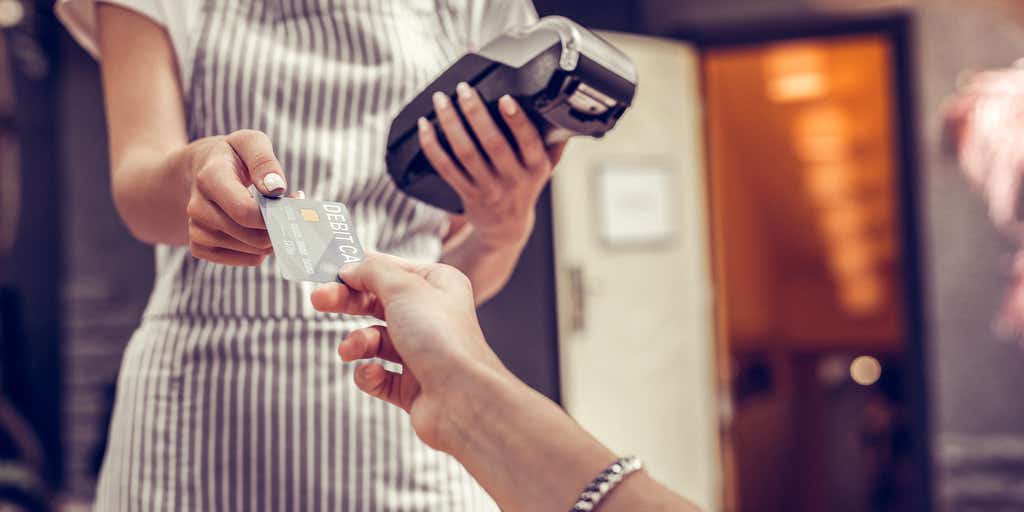- Uswitch.com>
- Credit cards>
- Compare our best money transfer credit cards
Compare 0% money transfer credit cards
0% money transfer credit cards
Money transfer cards offer 0% interest periods for transferring money from your credit card to your current account
Find your ideal credit card in minutes
Check your eligibility without impacting your credit score
Explore options from top UK credit card providers
Choose the right card for your needs
Find your ideal credit card in minutes
Check your eligibility without impacting your credit score
Explore options from top UK credit card providers
Choose the right card for your needs

Uswitch Limited is a credit broker, not a lender, for consumer credit.
Our services are provided at no cost to you. We may receive a commission from the companies we refer you to, but this does not affect what you will pay for the product you choose.

What is a money transfer credit card?
A money transfer credit card lets you move funds from your credit card to your bank account, working like a short-term cash loan. This can help if you're paying high interest on an overdraft as the credit card may offer a lower rate.
You can use the transferred money however you choose, and many cards offer a 0% interest period. However, money transfer fees often apply. If you repay the balance within the interest-free period, this can be a cost-effective alternative to a personal loan, especially for smaller amounts.
How can I find the best money transfer card?
The right money transfer credit card deal for you is one that best fits your very personal financial needs.
If it’s going to take a long time to sort out your finances, compare the money transfer credit cards with the longest interest free periods.
To cut the cost of your debt, consider a money transfer credit card with the lowest transfer fee. You can see the different options in our comparison tables.
Money transfer cards often trade off the length of the interest free period against the transfer fee. The longer the 0% period, the bigger the transfer fee and vice versa.
The best money transfer credit card for you ultimately depends on how long you think it will take you to pay off the debt.
If you think you can pay off the debt in a brief time, you could get a card with a short interest free period and a low transfer fee.
Unlock the best credit card deals for you
See which credit cards you're eligible for in just a few clicks
How does a money transfer credit card work?
A money transfer card moves cash from your credit card to your bank account. Firstly, compare deals and look for the right balance of fees and 0% interest periods to find your ideal card. After applying, you'll then need to do the following:
What to do after getting your money transfer credit card
It’s important to manage your card carefully to make the most of the 0% interest offer and avoid unnecessary fees. Here are some key steps to ensure you stay on track and maximise the benefits of your card:
1. Repay at least the monthly minimum
Always pay at least the minimum monthly payment on your money transfer credit card to keep your 0% interest rate intact. Missing payments could not only cause you to lose the interest-free period, but could also trigger penalty fees and higher interest rates.
2. Clear debt or transfer again before the 0% period ends
The 0% interest period won’t last forever, so either pay off your debt in full, or move the balance to another 0% offer before the introductory period expires. If you don't, you’ll face much higher interest charges, which could significantly increase your overall debt.
3. Check your card's rate before spending and avoid cash withdrawals
You may still have to pay interest on purchases and a much higher interest rate for cash withdrawals. Avoid using your card for cash withdrawals unless absolutely necessary, as the interest can start accumulating immediately.
4. Complete your cash transfer within the first 2-3 months
To benefit from the 0% interest and the low transfer fees, you typically need to complete the money transfer within the first 2-3 months after opening the account. This is a limited-time offer, so make sure you have all the necessary details ready for your transfer to avoid missing out on the introductory terms.
FAQs
Do money transfers hurt your credit score?
Not on their own.
But there are two things about the process that might affect your credit worthiness if you're not careful.
Firstly, applying for a new credit card is always recorded on your credit history and applying for a lot of cards in a short space of time can make you look desperate for cash.
Card finder and eligibility checker tools don't show up to other lenders on your credit record, however, so it's wise to use one before applying to limit the number of applications you'll have to make.
Secondly, lenders look at something called your "total available credit" before making a decision. This is worked out by adding up all your credit card and overdraft limits.
A new card adds to this total, but unless you've already got a large number of cards with high credit limits - for example equal to your annual salary - it probably won't be a problem.
The difference between money transfer and balance transfer cards
Money transfer cards and balance transfer cards are similar because they both involve shifting debt from one place to another.
With a balance transfer card, you can move debt from a card charging you interest, to one with lower or no interest. It can be a good way to pay off existing credit card debt or to consolidate your debts.
A money transfer card lets you transfer money (credit) from the card to your bank account, where it’s considered cash. Many people use these cards to pay off an overdraft.
It’s like releasing a cash sum to clear debts or provide a quick cash boost.
Are money transfer credit cards the best way to borrow cash?
Credit card transfers can be an effective way of borrowing small amounts of money over a short term without paying interest. But they may not be the best way for you to borrow cash.
Typically, you need a good credit rating to get one. If you have a bad rating and apply anyway, you risk being rejected by the card provider. If you then make more applications within a short period of time your score could be damaged further.
To avoid paying interest on the credit card debt, you need to be sure you can at least meet the minimum repayments.
If you don't repay the card before the interest free period expires, you’ll be charged interest on the remaining debt. This is the card's APR, or annual percentage rate.
How to transfer money from credit card to bank account
To transfer money from a credit card to your bank account, you need a card designed for that purpose. You can apply online, over the phone or in branch.
To be sure you get the best one for you, it is good practice to compare money transfer cards first.
After your application has been approved, the card provider will send you the physical card in the post. This may take around 5-10 working days.
Once you have your card, you can transfer credit into your bank account. When the cash arrives in your current account you can spend it in the same way as you normally would with your debit card or by withdrawing cash. You can do this without incurring any fees or charge (as long as it is an ATM that provides free cash withdrawals).
This is a much better option than trying to withdraw cash using a credit card. Technically, you can take out money using your credit card. But it's best avoided because it shows up in your credit file and damages your credit score. You’ll also be charged fees and interest from the date of the transaction.
Can I transfer money from a credit card to a bank account?
Yes, you can transfer money from a credit card to a bank account. But your money transfer card application must be approved first.
One advantage is that by transferring a sum of money to your current account, you can avoid paying any interest on your debt.
Not all credit cards are designed to let you switch money from your credit card to your current account. Those that are, will charge you a small fee.
The transfer fee is usually around 3% to 4% of the money transferred. You need to factor this into your calculations when working out whether it’s worth making the transfer.
Compare the cost of the transfer fee with the cost of continuing to pay the charges on your overdraft. Although overdraft fees are no longer allowed, banks can charge a fixed interest rate. Many charge almost 40%.
So, moving money from your money transfer credit card into your bank account may help you sort out your finances in the short term.
Remember to think about how you're going to pay off the debt on your money transfer credit card. For example, you could set up a monthly payment from your current account to gradually clear the debt.
The best money transfer cards have 0% interest periods lasting over a year. If you pay back your balance in full during this interest free period, you will not pay any interest.
Didn’t find what you were looking for?
Explore popular credit cards and handy tools






